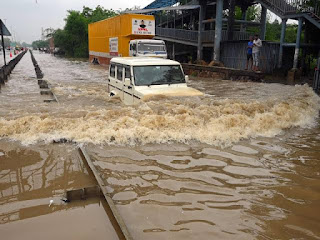Bermuda triangle
The Devil's Triangle, often known as the Bermuda Triangle, is a location in the western North Atlantic Ocean where it is rumoured that several ships and aeroplanes have mysteriously vanished. Miami, Bermuda, and Puerto Rico form the general perimeter of the triangle.
The numerous mysterious disappearances that took place within the limits of the Bermuda Triangle led to its renown. These occurrences have frequently been sensationalised by popular culture and the media and linked to supernatural or alien activity. It's crucial to remember, though, that many of the disappearances can be attributed to natural factors, like as storms, mistakes made by humans, and the size of the oceans.
In the region, strange events have been reported since the early 19th century. The loss of the USS Cyclops, a cargo ship for the American Navy, with its 309-person crew in 1918 is one such instance.
Although the Bermuda Triangle is still a topic of discussion and conjecture, scientific research has largely disproved its alleged reputation as a place of paranormal activity. When compared to other regions of the world's oceans, many experts think the frequency of disappearances in the Bermuda Triangle is not statistically significant.
Five U.S. Navy planes went missing during mission 19, a normal training mission, in 1945, which became the first occurrence in the Bermuda Triangle to get widespread media attention. The "PBM Mariners," the search and rescue planes assigned to find the missing planes, vanished as well. These events prompted curiosity and rumours about the area.
The phrase "Bermuda Triangle" was first used in an essay by E.V.W. Jones that appeared in Fate magazine in 1950. The report raised concerns about the area's mysticism by focusing on Flight 19 and other disappearances.
There are many reasons responsible for that some are here-
1 Humman mistake -Numerous events can be ascribed to human error or navigational faults, such as incorrect instrument interpretation, inexperience, or insufficient training.
2 Weather condition-Extreme weather events, including as hurricanes, tropical storms, and unexpected, intense storms, are common in the Bermuda Triangle region. These weather patterns could be quite dangerous.
3 Gulf of stream -Tropical storms, hurricanes, and sudden, strong storms are among the severe weather events that frequently hit the region inside the Bermuda Triangle. These climatic patterns can be extremely.
4 Underwater current -Deep trenches and underwater mountains are characteristics of the ocean floor in the Bermuda Triangle. Strong underwater currents can be produced by this uneven topography, which could be dangerous for vessels.
5 Methane gas hydration -According to some ideas, methane gas hydrates held beneath the ocean floor may be released in enormous quantities, resulting in bubbles that impact buoyancy and reduce the density of the water. This notion, however, is still theoretical because it is unsupported by solid data.
It's crucial to approach the Bermuda Triangle with a critical and scientific perspective, taking into account the evidence at hand and realising that the region's incident rate is not noticeably higher than that of other ocean regions with comparable levels of traffic.





Brilliant!!
ReplyDeleteHoping to get an article on recent floods and landslides happening in northen India.
ReplyDeleteOk sure,thanks for suggestion
DeleteImpressive
ReplyDeleteCommendable
DeleteNyc keep it
ReplyDeleteVery nice and Informative.
ReplyDeleteThank you for your post. Really helps me!!
ReplyDeleteNice written ✍️
ReplyDeleteGreat job shipra👍
ReplyDeleteVery informative and the language used is really subtle and simple that everyone can easily understand 👏🏻👏🏻 your efforts can be seen
ReplyDeleteInformative
ReplyDeleteWonderful
ReplyDelete